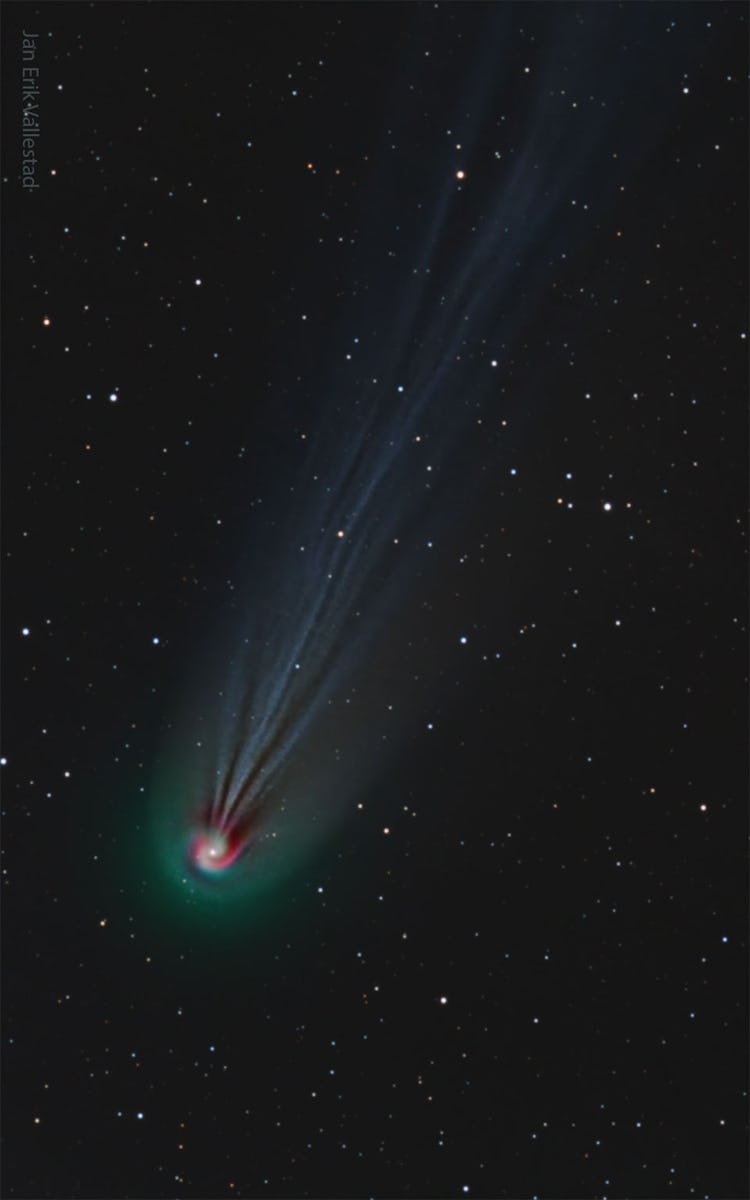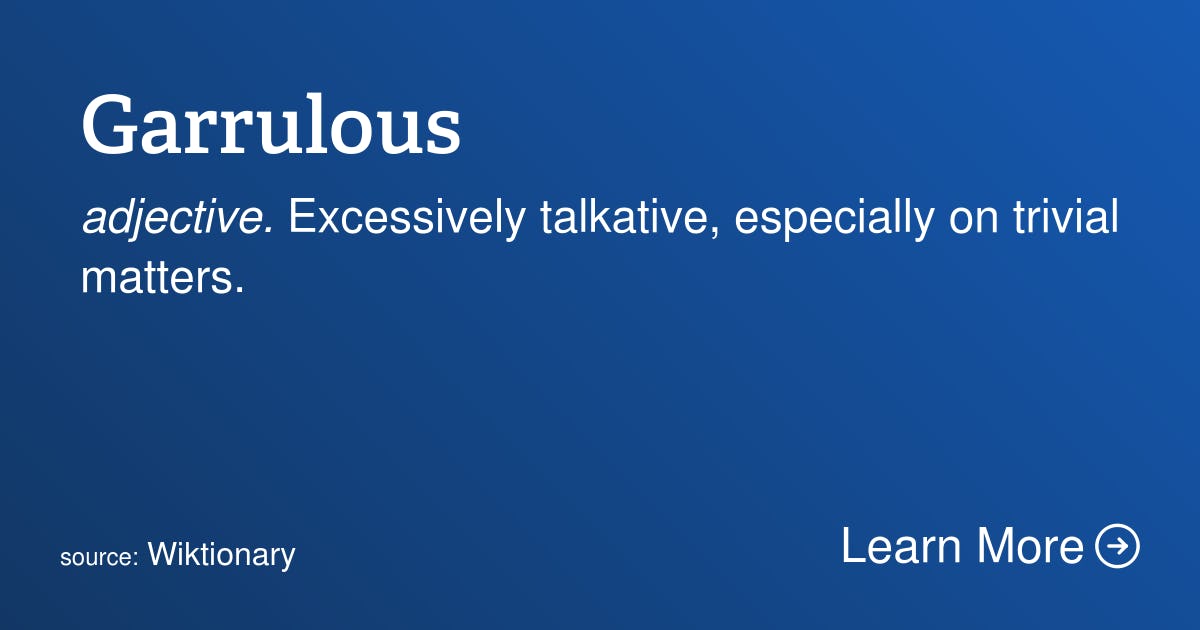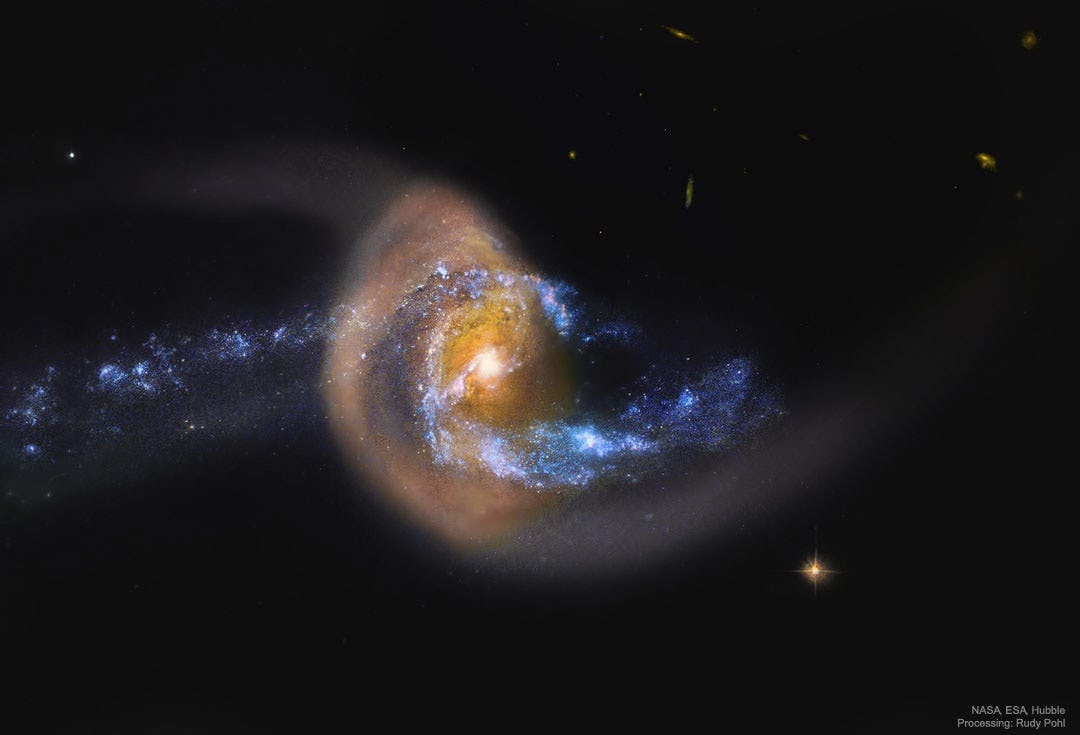I know not of tomorrow,
for its beyond my grasp,
like trying to lock up something,
which does not have a hasp.
Public Posts Seattle, WA Seattle, WA (zoom)
What are you thinking,
about your God above?
Don't be too sad, for you,
may be falling in Love.
NASA Astronomy Picture of the Day:
A bright comet will be visible during next month's total solar eclipse. This very unusual coincidence occurs because Comet 12P/Pons-Brooks's return to the inner Solar System places it by chance only 25 degrees away from the Sun during Earth's April 8 total solar eclipse. Currently the comet is just on the edge of visibility to the unaided eye, best visible with binoculars in the early evening sky toward the constellation of the Fish (Pisces). Comet Pons-Brooks, though, is putting on quite a show for deep camera images even now. The featured image is a composite of three very specific colors, showing the comet's ever-changing ion tail in light blue, its outer coma in green, and highlights some red-glowing gas around the coma in a spiral. The spiral is thought to be caused by gas being expelled by the slowly rotating nucleus of the giant iceberg comet. Although it is always difficult to predict the future brightness of comets, Comet Pons-Brook has been particularly prone to outbursts, making it even more difficult to predict how bright it will actually be as the Moon moves in front of the Sun on April 8. Total Eclipse Info: 2024 Total Solar Eclipse from NASA
Photo by Jan Erik Vallestad
William Butler Yeats (1865 – 1939) Irish poet, dramatist, prose writer. He was a driving force behind the Irish Literary Revival. In his later years served two terms as a Senator of the Irish Free State. More
Hello my darling,
Happy Birthday to you.
I'm trying to not be lonely,
It's what I am trying to do.
What can I do,
I am searching for thee,
but in the darkness,
I can no longer find me.
Could have been.
Couldn't be.
We'll never know,
We'll never see.
Refugees, we are,
Refugees, we will be,
As we flee from,
This warped society,
Where lying is encouraged,
While truth matters not.
All the Golden Rule's, broken.
Everyone can be bought.
Into our lives,
comes many a friend.
Sometimes forever,
when a friendship never ends.
I am writing, for
all the tomorrows of yesterday,
and for the promises made,
of something which seems far away.
NASA Astronomy Picture of the Day:
Is this galaxy jumping through a giant ring of stars? Probably not. Although the precise dynamics behind the featured image is yet unclear, what is clear is that the pictured galaxy, NGC 7714, has been stretched and distorted by a recent collision with a neighboring galaxy. This smaller neighbor, NGC 7715, situated off to the left of the frame, is thought to have charged right through NGC 7714. Observations indicate that the golden ring pictured is composed of millions of older Sun-like stars that are likely co-moving with the interior bluer stars. In contrast, the bright center of NGC 7714 appears to be undergoing a burst of new star formation. The featured image was captured by the Hubble Space Telescope. NGC 7714 is located about 130 million light years away toward the constellation of the Two Fish (Pisces). The interactions between these galaxies likely started about 150 million years ago and should continue for several hundred million years more, after which a single central galaxy may result.
Alone in the darkness.
Alone in my room,
brings forth memories,
of impending doom.
Why must I worry,
when I have a concern?
When your Lifes memories,
you're determined to burn?
Burn them to ashes,
remember no more,
for nothing matters.
We're not keeping score.
There's a pain,
deep, in my chest.
I cannot sleep or,
get any rest.
A love for another,
deep within me,
I won't share, a name,
for all to see.
A one sided love,
you cannot pretend,
for it must be noted,
there's no happy end.








.jpg?fit=crop&w=280&h=280&q=93)













 - Copy.jpg?fit=crop&w=280&h=280&q=93)














